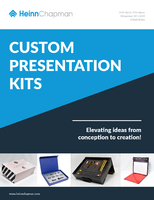Testing of Motor Non-Metal Materials
With the expanding application of non-metal materials in automobiles, requirements on corresponding properties of these materials are put forward. For example, the emitting of hazardous and noxious substances from auto's inner decoration materials is harmful to health. The condensation of volatile materials on winder screen affects safety of driving. Gas permeability capability of fuel tank, gas permeability capability of seat materials, gas barrier capability of inner tube and safe airbag have much to do with the comfort of driver. Because of these problems, corresponding test methods, test standards, and test instruments are introduced in succession. The latter part is a brief introduction to relating test items.
Testing the Impact of Emitting Materials of Auto's Inner Decoration Materials on Windscreen
Auto's inner decoration materials, such as engineering plastics, textiles, leathers and non-woven fabrics, as well as various adhesives used to mount the former mentioned materials, containing volatile substances that emit under heat and condense on window or windscreen, causing poor visibility and affecting safety of driving. At present, relevant tests have appeared in foreign countries based on standards of DIN 75201-ISO 6452-SAE J1756 and etc. To improve product quality or to expand their oversea markets, some domestic auto manufactures and auto's inner decoration manufacturers also attach great importance to these tests.
Permeability Test of Auto Plastic Fuel Case
ASTM D3985 offers another test method. Cut a plastic slice from a tank and test its oxygen transmission rate. Comparing this result with that of various plastic sheets so as to scientifically and quickly decide the plastic that possesses better property.
In ASTM F1307, test method for integral package testing is provided, with which the sealability testing of the whole package is realized.
Gas and Water Vapor Permeability Testing of Seat Materials
GB/T10655-2003. Test procedures of gas permeability are as below: place the specimen of specified dimension inside test chamber and evacuate one side of specimen so that there is certain differential pressure formed on two sides of specimen. Then test the transmission quantity of test gas through specified area within certain time to obtain the transmission rate; or maintain the transmission rate through specimen and test the pressure difference on two sides of specimen to obtain resistance of airflow. This test method is in accordance to GB/T10655-2003.
ASTM E398. Test procedures for water vapor permeability testing are as below: place the specimen between dry and humid chambers at constant temperature. Then the sensor inside test chamber records the humidity variation inside and trace the time needed for the preset low limit value to reach upper limit value. With continuous testing and systematic analysis, water vapor permeation and water vapor permeability rate can be obtained. This method is in accordance with ASTM E398.
Gas Barrier Property Testing of Inner Tube and Safe Airbag
Materials of both Car inner tube and safe airbag are required to have good barrier property. The former guarantees that tube inflation will not be need during long journey while the latter guarantees that in the event of accidental collision moments, quick muster of safe airbag can ensure a certain degree of pressure.
Labthink International Inc. ,
200 River's Edge Drive
Medford, Massachusetts, 02155, U.S.A.
Phone: +1-617-830-2190
FAX: +1-781-219-3638
Email: info@labthinkinternational.com
Website: http://www.labthinkinternational.com
Â




